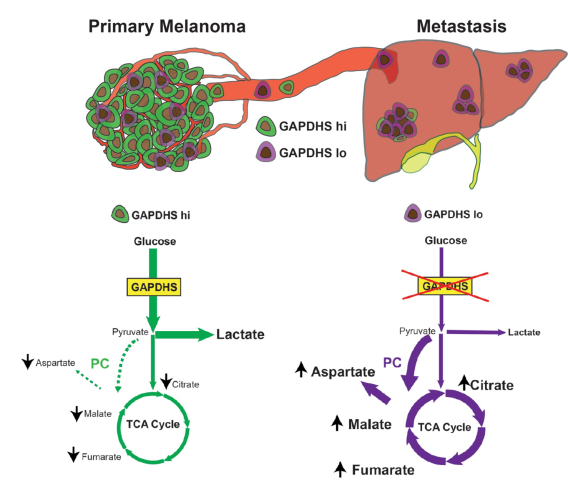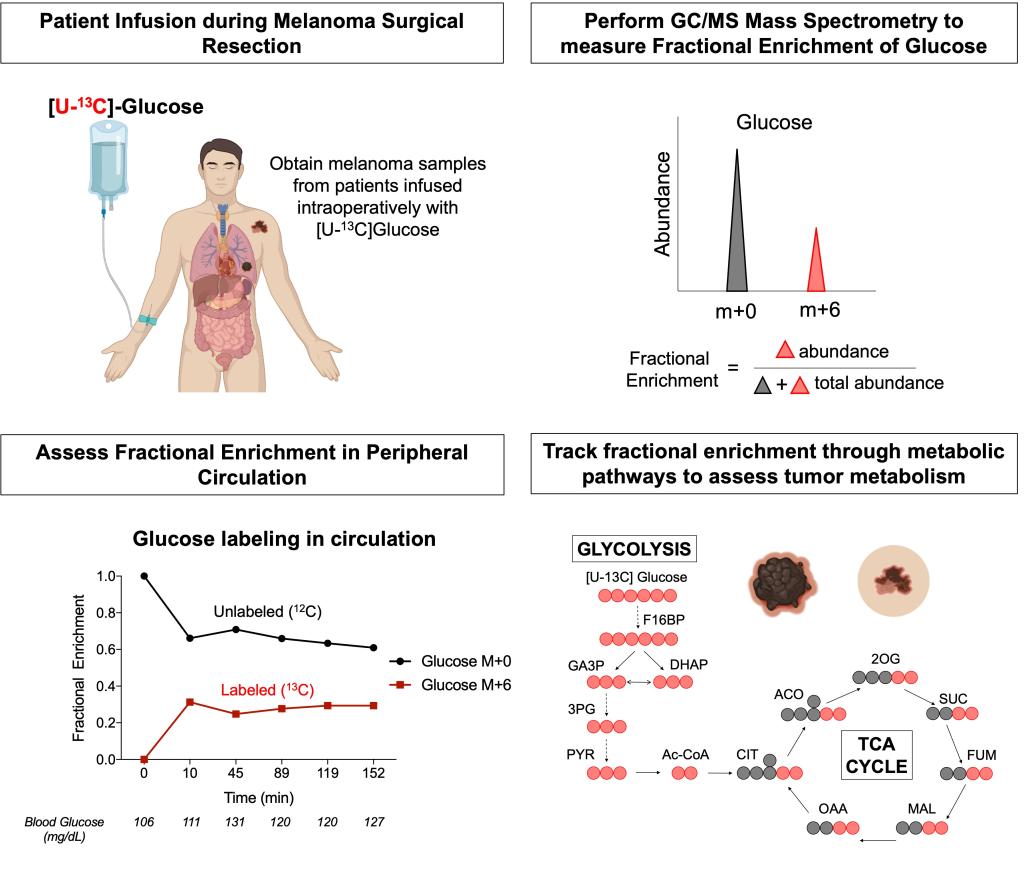
Understanding the role of GAPDHS in melanoma progression
GAPDHS (glyceraldehyde 3-phosphate dehydrogenase, spermatogenic) is a glycolytic enzyme normally expressed in sperm and is required for its motility. We previously discovered that the majority of patient melanomas also express this enzyme as a unique isoform. Using a patient-derived xenograft model system, we showed that modulating GAPDHS enzyme levels not only altered melanoma metabolism, but changed tumor cells’ ability to metastasize. Ongoing studies in the lab are aimed at understanding how GAPDHS is regulated, its mechanism(s) of action, and its potential as a predictive biomarker of patient outcomes.

Characterizing the impact of tumor metabolism on melanoma behavior
In order for tumor cells to grow and metastasize to distant sites, they must alter their metabolism to handle environmental stress and meet high anabolic and catabolic demands. To study melanoma tumor metabolism in vivo in patients, we have initiated a clinical trial with Dr. Ralph DeBerardinis (UTSW) and Dr. Aparna Rao (Peter MacCallum Cancer Centre) to perform 13C-glucose infusions in patients undergoing surgical resection of their melanoma tumors. Through this isotope tracing data, we can begin to understand how aggressive melanoma tumors alter their glucose metabolism to grow and metastasize in patients. In addition to this clinical trial, we have established the Human Melanoma Metabolism (HuMM) biobank, consisting of patient melanoma samples with associated metabolomics, lipidomics, and clinical outcome annotations. The goal of these studies is to uncover critical metabolic vulnerabilities that can be exploited in future novel targeted therapies.

Clinical and translational studies in melanoma patients
Our lab has many ongoing clinical and translational projects aimed at better understanding the complexities of melanoma behavior in patients. Follow our lab’s publications to see what we have discovered!